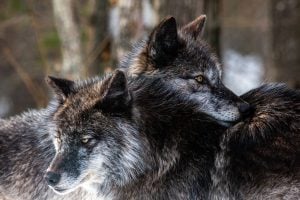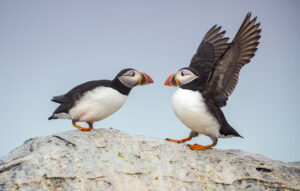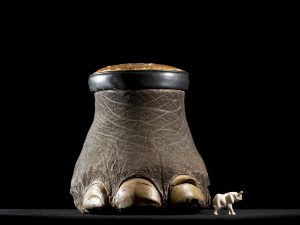
Wildlife
Do not disturb: Practicing ethical wildlife photography
Wildlife photographers on the thrill of the chase — and the importance of setting ethical guidelines
- 2849 words
- 12 minutes
This article is over 5 years old and may contain outdated information.
Wildlife

Eighty days. That’s how long wildlife photographer Peter Mather estimates he spent planning, researching and capturing the incredible photos of wild Yukon wolves and their pups that appear in Canadian Geographic‘s March/April issue, which hits newsstands next week.
“Wolves are very difficult to photograph,” he tells me over the phone from a highway somewhere outside his hometown of Whitehorse, Yukon. “It takes a lot of luck, and a lot of research, and a lot of attempts.”
Somewhat ironically, as we speak, Mather is on his way to Alaska, where he plans to spend two and a half months pursuing an even more elusive creature: the wolverine. But that’s just par for the course for the hardworking Mather, who left his job as a math teacher two years ago to focus full-time on his real passion, conservation photography. Here, he shares more photos and anecdotes from his epic search for wild wolves, as well as his advice for aspiring wildlife photographers.
On what drew him to wildlife photography
When I was in university, this epic adventurer and conservationist in the Yukon, Ken Madsen, passed through my school and did a slideshow about the Peel watershed and environmental issues. I saw that slideshow and that got me started on the idea of photography. More recently, I worked on a National Geographic story about the Yukon with Paul Nicklen, and through that I kind of figured out what I wanted to do with photography — that it was less about just wanting to take beautiful photos and more about wanting to tell a story with photography, especially about wildlife and conservation. Since then, I’ve been really happy with what I’m doing. I’ve found my purpose with photography.
On what he admires about wolves
Wolves really capture the imagination. I think it’s so neat how a wolf pack is more of a wolf family, and the way they care for their family is very similar to the way we do as people. The way they interact with each other is often very human-like. They have a very high level of intelligence. All those things speak to me and make me have so much admiration for wolves. That’s why I wanted to tell that story.

On those adorable wolf pup photos
When you see stuff like that, it’s just such an experience that you kind of forget about the photo! You know you’re going to be getting good photos if you’re really enjoying the moment. It was so neat to see that and have those wolves be really tolerant of me and let me capture that aspect of their world.
On his advice to aspiring wildlife photographers
I think it’s important to have a purpose for your photography, for two reasons. The first is that wildlife and nature need to be appreciated and need to be celebrated. With my photography, I’m trying to give people a better understanding of wild places and wild things in our world. The other reason is that, if you have a purpose for your photography, you’ll develop a real passion for what you’re doing. If you’re just trying to take pretty pictures, your passion might run out, but if, for instance, you’re taking pictures of a salmon run to help educate people about salmon, you’ll keep pushing yourself and you’ll get much better.


On what he hopes people take away from his work
I hope to inspire people to get outside and see these things for themselves. We’re better people when we spend more time outside. I also hope to get people interested in conservation issues, whether it’s the importance of protected areas or wildlife that needs help to survive, or a big issue like climate change, which will affect our children and grandchildren in ways we can’t even fathom. I hope people get a little bit of that out of my photography and that it plays a small role in helping our species move forward in a gentler and more sustainable way.


Are you passionate about Canadian geography?
You can support Canadian Geographic in 3 ways:

Wildlife
Wildlife photographers on the thrill of the chase — and the importance of setting ethical guidelines

Wildlife
Exploring our love-hate relationship with the wolf

Wildlife
Canadian Geographic is pleased to honour 14 photographers for their outstanding images of Canadian wildlife

Wildlife
An estimated annual $175-billion business, the illegal trade in wildlife is the world’s fourth-largest criminal enterprise. It stands to radically alter the animal kingdom.